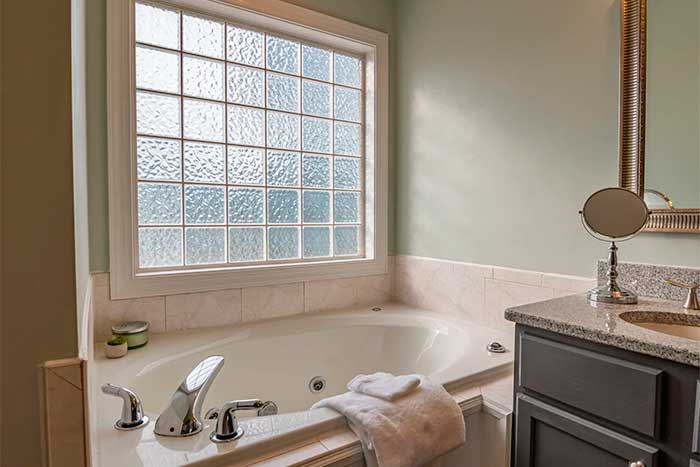
Bathrooms, perhaps more than kitchens, are the most popular remodeling projects among homeowners. Because the area is smaller, the job is a little easier. Plus, because there is less room, there are fewer costs: less carpeting and paint, fewer cabinets, and fewer countertops.
When it comes to selecting the ideal accessories for your bathroom, it can be a difficult task. Material, appearance, function, and pricing all work together to make your decision even more difficult!
Aside from wanting to be aesthetically beautiful, the quality and durability of the bathroom are the most important factors to consider. The two most common types of bathroom hardware in the market are brass and stainless steel.
Factors to Consider Before Choosing a Material For Your Bathroom
You should take into consideration the following three factors to determine the best material for your bathroom:
1. Cost
Cost is one of the major factors to consider while renovating and choosing one material over another. However, it is necessary to not compromise quality as cheaper materials may cause problems in the future.
In terms of cost, stainless steel is preferred over brass as it is cheaper and has more long-term benefits as brass fixtures usually require high maintenance costs.
2. Design
Choosing the correct design is a very personal choice. In general, it’s a good idea to keep your bathroom’s design scheme consistent. For instance, with luxuriant, turn-of-the-century decor, a modern, high-tech shower would look out of place.
3. Resilience
Since utility is a major goal in all bathroom designs, resiliency is an important element of bathroom hardware. Your hardware should be designed to be touched often and to withstand water without deterioration.
As a result, natural materials such as wood are rarely used in bathroom hardware, while metals like brass, nickel, and bronze are popular because they can withstand dampness and friction. As a rule, people use this kind of material in ball valve manufacture. The reason is that iron oxidizes and rusts with time, many homeowners prefer to replace it with stainless steel or coat it with a water-resistant coating.
Alternatively, glass can also be used, though some people claim that it becomes too slippery when wet.
Difference Between Brass and Stainless Steel
When it comes to choosing the right material for your bathroom, there are a few things to consider. For example, you should consider the amount of humidity, heat, wetness, and other environmental factors that affect your hardware and aesthetic touches.
Because of the prevailing local conditions, if you choose the improper material, it would decay and lose its brilliance. Let’s look at how both the substances differ from each other in terms of material composition.
Brass is an alloy of copper and zinc. It contains 50-63% copper and 50-37% zinc. Brass hardware is made with a variety of techniques, including wrought, forged, cast, and die-cut procedures. It’s easier to cast, and it’s flexible enough to machine with minimal effort and tough enough to withstand the rigors of life as a faucet, thanks to its low melting point.
Another material for bathroom components is stainless steel. These stainless steel choices contain 18 percent chromium and 8-10 percent nickel, with the nickel providing a unique crystalline structure that improves the material’s strength and malleability while the chromium aids in corrosion resistance.
Characteristics of Brass and Stainless Steel
Let’s compare the two materials based on different characteristics:
1. Resistance to Corrosion
Brass
Because all-brass or solid brass faucets and fixtures contain very little iron, they are corrosion-resistant. They do, however, tarnish due to dampness, which causes oxidation and discoloration of the polish.
A light commercial polish designed for brass plates can be used. When exposed to water, dezincification-resistant brass (DZR) corrodes less. However, brass with less copper content can corrode easily when in contact with water.
Stainless Steel
High-quality stainless steel faucets, particularly the 304 grade, which is very heat and corrosion-resistant, do not rust readily. However, counterfeit or low-quality stainless steel fixtures, which are less expensive but more prone to corrosion, should be avoided.
2. Maintenance Costs
Brass
Solid brass fittings with no lacquer that tarnish easily and produce a realistic patina over time. This gives the faucet a natural, aged appearance while requiring little maintenance. Lacquered brass is protected from tarnishing and aging by an electrophoretic coating.
As a result, they remain shinier and yellower. Fingerprints and water stains are difficult to notice.
Stainless Steel
When compared to brass faucets, stainless steel faucets are significantly easier to maintain. They do not lose their gleaming luster with time. Stainless steel faucets, on the other hand, show fingerprints and marks readily.
3. Aesthetics
Brass
Brass fixtures are more versatile in terms of design, in addition to being high-end. They are available in both classic and contemporary clean-lined finishes.
Stainless Steel
Stainless steel has a glossy sheen with warm grey and yellow undertones that gives it a sophisticated and streamlined appearance. The variety of bathroom interiors is further enhanced by matte and glossy versions.
4. Durability
Brass
Solid brass accessories are resistant to cracking and disintegration. They are more scratch-resistant and can last for decades.
Stainless Steel
Stainless steel faucets and fixtures can resist high water pressure and are recommended as a long-lasting material. It is resistant to dents and bends and has a lifespan of at least 10 years. Using scouring powder or harsh brushes on this metal should be avoided because it is prone to scratches.
Conclusion
Brass and stainless steel have their own advantages. Steel is comparatively cheaper and requires fewer maintenance costs. After looking at the three factors and some differences between the two materials, you can choose one material over another, depending on your preferences.


